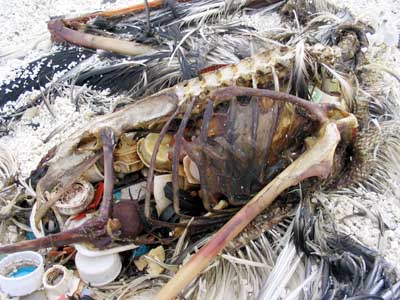It’s the home stretch for me. I’ve sold my home on the Outer Banks of North Carolina and it’s due to close this coming Friday. Although all the big items have already been packed up and placed in storage, there was still food in the house, since I occasionally returned to the Outer Banks during the 18 months it was listed for sale. Yesterday I decided it was time to tackle the pantry and refrigerator. I sorted the food into three groups:
- Items that I would take back to Sarasota with me, like rice and dried beans
- Non-perishable items that were still good but that I did not want to bring to Sarasota (these were destined for the local food bank)
- Perishable items and non-perishable items that are out-of-date and must be thrown out
When I finished sorting, I grabbed a big black plastic trash bag and began loading it up with all the stuff to be thrown away. It was an uncomplicated task that let my mind wander, and I began thinking about a video I had watched that very morning at the coffee shop. It was a feature about the Great Pacific Garbage Patch, an area of the ocean twice the size of Texas that is overloaded with floating trash. Located 500 miles off the coast of California, midway between the U.S. and Japan, this ocean patch is known as the north Pacific gyre, more commonly called the horse latitudes by sailors, who avoided the area at all costs for fear of being becalmed.
This ocean realm is created by a huge mountain of air that is heated at the equator and then descends in a gentle clockwise rotation as it approaches the North Pole. The winds produce circular ocean currents that spiral into a center, carrying with it the debris of civilization, some of it having floated around the Pacific Rim for as long as 12 years before making its way to the garbage heap. In earlier days, this debris did not accumulate because it was broken down by microorganisms into carbon dioxide and water. Five decades ago, however, we created a class of products that do not biodegrade. Plastics, like diamonds, are forever.
Plastics photo-degrade. Through this process, plastics are broken down by sunlight into smaller and smaller pieces, all of which are still plastic polymers. Eventually they become individual molecules of plastic, but that’s as far as the degradation goes, and for the last 50 or so years, every piece of plastic that has made it from our shores to the Pacific Ocean has been breaking down and accumulating in the central Pacific gyre.
Much of the research on this issue has been done by Captain Charles Moore, the founding director of the Algalita Marine Research Foundation, who recently co-authored a study titled: “A comparison of plastic and plankton in the North Pacific central gyre.” The study, which was published in the Marine Pollution Bulletin, a well-respected, peer reviewed, scientific journal, substantiated Moore’s claim that the mass of plastic in the gyre was approximately six times that of plankton. Not only has this created a 30-meter deep soup of partially degraded plastic, it is having enormous negative consequences on the wildlife, both marine and avian, who feed in the area. This photo of a dead Albatross clearly shows the multitude of plastics that had been ingested by the bird as it fed, including a wide variety of bottle caps:

The moment my mind called up the image of that poor Albatross, I looked down at what I was doing and drew back in horror. Most of the foodstuffs I was loading into that black plastic garbage bag were in recyclable packaging, the largest portion being plastic. Ashamed of myself, I unloaded the bag and opened each of the containers, sending their contents down the drain to the disposal. Later that day, I carried the plastic, glass, steel, and aluminum to the recycling center, where I would have normally disposed of it. I don’t know what I was thinking. Perhaps the fact that the containers were full rather than empty threw me for a loop. Whatever the reason, I am so glad to have caught myself before I took the easy route and threw it all in the trash.
If you’d like to learn more about the Great Pacific Garbage Dump, watch the video below. It will surely convince you that we need to be extremely careful about disposing of our plastic waste, if not find an altogether different packaging alternative. I must remember that although I am only one person, every action I take has a consequence. My one action, multiplied by a hundred thousand people who move each year, amounts to a near-environmental disaster. Gladly, my environmental disaster was averted in the nick of time.

Hi,
Can I use your photo about that poor albatross with bottle caps in his stomach in myös powerpoint-presentation. In it I tell children about PET-bottles life from oil to district heating. I tell them also the plastic waste in oceans.
Naturally I put your name to the list of photos in my pp-presentation.
Anu K from Finland
It makes me sad to see destruction on such a scale and reminds me that I have a responsibility to consume less. Thanks for posting.
Great, thanks!